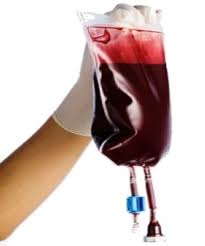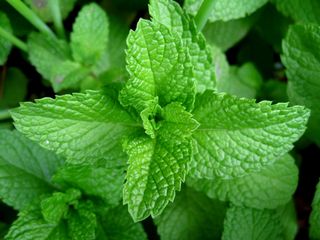I must admit, I do not follow fashion. I am not sure what is “in” right now. I just buy the styles, colours and fabrics I like to wear. I am kind of an unintended anti-fashionista. I almost always shop at thift stores because not only do I save a lot, but I also find the most interesting pieces of clothing. My favourite thrift store is the Value Village located on Pembina Street in Winnipeg, Manitoba, Canada, which I visit every time we travel to Winnipeg to spend time with Jay’s parents (see photo taken from Google Street View). One thing I always check when picking my clothes is the fabric label. I always want to make sure the item is made of a natural fabric. I am always astonished at the amount of synthetic fabric used in clothing. A large majority of clothes are made of synthetic fibres which do not biodegrade, are not compostable and take a very long time to decompose according to an article published in Grist:
On Khadi: Fabric of Freedom
Before I even get into khadi and why it is much more than just a silky soft, hand spun, hand woven fabric made in India, some background is in order.
I was born and raised in Canada, but my roots are part Bengali on my father’s side. Bengali people hail from Bangladesh or West Bengal, the northeast Indian state adjacent to Bangladesh. In 1947, India achieved its independence after 200 years of British colonialism and oppression. Independence came at a divisive price as India was partitioned into the dominions of India and Pakistan following violent conflict between Hindu and Muslim extremists. At that time, what is now Bangladesh became East Pakistan. This is where my father grew up until adolescence and where our family had lived for ages. Overnight there was a mass migration of Muslims out of India into Pakistan, and of Hindus out of Pakistan into India. Our family was part of that teeming human flow moving from East Pakistan into West Bengal. Generations of family heritage were left behind overnight in exchange for survival. (Map Image: ©National Maritime Museum, London)
Plastics and Breast Cancer
11 September 2010 — Plastics can cause or contribute to breast cancer. Our dear friend Janet has breast cancer and we can’t help but wonder if some plastic chemicals have played a role in the development of her disease. When she was first diagnosed, she had stage 3 breast cancer in 2005 and was still breastfeeding her 6 month old son. Stage 3 means that although her cancer had not spread to other organs, some cancerous cells had been found in her lymph nodes. She immediately had her right breast surgically removed and started chemotherapy. Two years later, her cancer progressed to stage 4 when metastases were found in her lungs. After treatment her cancer went into short remission and then last summer, a tumour was found in her brain. As she puts it, she “tripled” her prognosis and one year later leads a very full and active life. She continues to be very involved on the advocacy front, trying to help traditional medicine embrace a more holistic approach toward cancer.
Plastic Residue from Blood Bags End Up in Blood Stream
10 October 2010 — A friend of ours who is a major cycling fan sent us this news story about Alberto Contador, the Spanish cyclist who won the Tour de France this summer (and last year). Apparently he is suspected of having used the performance-enhancing drug called clenbuterol through intravenous supply. He says that it is through food cross-contamination that traces of the drug ended up in his bloodstream. However, along with traces of the drug, officials also found “traces of a plastic residue the same as the type used to manufacture blood bags”. So he is probably lying…
How about some sustainable Apartment Therapy?
5 November 2010 — Their motto is “saving the world, one room at a time” and they are one of THE go to places for all things design. Apartment Therapy is a juggernaut in the online design world because they make design easy and accessible. And they do it with flair. Their mission is to help people “make their homes more beautiful, organized and healthy by connecting them to a wealth of resources, ideas and community online.” And this while trying to reduce people’s reliance on stuff.
So we are pleased as punch to be included on Apartment Therapy’s list of 25 Sustainable Servingware & Tableware Sources just released yesterday for the holiday season. Their eco-friendly list is divided into three meaningful parts: 1) dishes made from mindful materials (we’re in here!), 2) servingware that’s fair trade, and 3) vintage tabletop ripe for re-use. (Image credit: Apartment Therapy)
Mint leaf removal duty
20 November 2010 — This post may not initially appear to have anything to do with plastic. Just wait. Read on to the end.
I love mint tea. It’s a primal sort of thing. There is something about the smell of fresh whole peppermint that puts me in another state of being – it’s such an ethereal, magical fragrance. For me it’s tinged with comfy homey memories of Mom, cozy warmth, an Olbas oil neck massage, summer, deep velvety green, hot mint tea by the fire on a snowy winter day.
Right now I’m on peppermint leaf removal duty. This is not an arduous task. It is a supreme pleasure. My fingers are perfumed by the leaves. We share a garden with our neighbour Peter, and this mint comes from there. He’s a master gardener and master accordian player. Tons of talent, that guy; I learn a lot from him. I harvested it a few weeks ago and it has been drying on our basement radiant floor ever since. So tonight I decided to take all the dry leaves off the stems to prepare my winter stock of peppermint for tea. It’s slow going because there is a lot. I drink a lot of mint tea. When I’m done I’ll have a couple of large jars full of delectable mint leaves, just yearning to impart their magic through a boiling water bath for a few minutes. Then into my body to shimmer my soul.
If it Does not Say where it is Made, it is Probably Made in China
28 January 2010 — I don’t know about you, but I like to have as much information as possible about a product before I buy it so I can make an informed decision. One information that I find difficult to find on many shopping websites is the country of origin. This is an important information but on many websites, you can assume that if the place of origin of a product is not indicated, then it probably comes from China.
I generally prefer not to buy from China unless the product is absolutely unique, high quality and not available from a different country. My main reason for avoiding Chinese products is my deep empathy for what Tibetan people and other minorities are enduring in this country. Chinese dissidents who dare to criticize the government are arrested and jailed. I also have strong reservations about this country’s environmental policies. I must admit also that the 2007 melamine scandal still pops to my mind when I think of products made in China.
Canada to Introduce Plastic Money (Plastic Bills)
10 March 2010 — In its latest budget just introduced a few days ago, the Canadian Government announced it will introduce plastic dollar bills starting next year. These dollar bills will be replacing the current cotton-based money.
According to the Canadian Government, this is a “green” step because the new plastic bills are reportedly ore durable as they last 4 times longer than the current biodegradable money. This will represent savings for the Canadian Governments as this new money is cheaper and harder to counterfeit.
The Best Non-Plastic Mattresses
31 March 2010 — While the mattresses that my grand-mother used to sleep on were made out of cotton, wool or straw (she was born in 1907), nowadays they are mostly made of foam. Petroleum-based polyurethane foam used in mattresses breaks down over time and, according to a study by the Consumer Product Safety Commission reported in the Washington Post in April 2008, releases 0.802 mg of antimony and 0.081 mg of boric acid (the poison used to kill cockroaches) in the air every night. These amounts are apparently OK if you are more than 5 years old (!). And formaldehyde – declared toxic under the Canadian Environmental Protection Act – can be present in box spring glue. Conventional mattresses for children may also contain phthalates, and often flame retardants such as poloybrominated diphenyl ethers (PBDEs are banned in Europe and are being phased out in the United States… but are still very legal in Canada).
My friend Jean Corriveau is a pioneer in the world of non-plastic healthy mattresses and he manages his business in a very honest and ethical way. He is just the nicest person, full of integrity, who would never compromise on quality. He is the owner of Sleeptek which developed a completely natural mattress line 15 years ago in response to demands from some of his highly chemical-sensitive clients. His Obasan mattresses are not only made of organically grown cotton and sustainably harvested natural rubber, but the wool he uses comes from a family-run organic sheep farm in the Netherlands. The wood in the box springs comes from Quebec spruce — sustainably harvested — and no synthetic glues, dyes or finishes are used. (Read more:http://www.nationalpost.com/life/footprint/story.html?id=2072160#ixzz0jif8xE9h)










